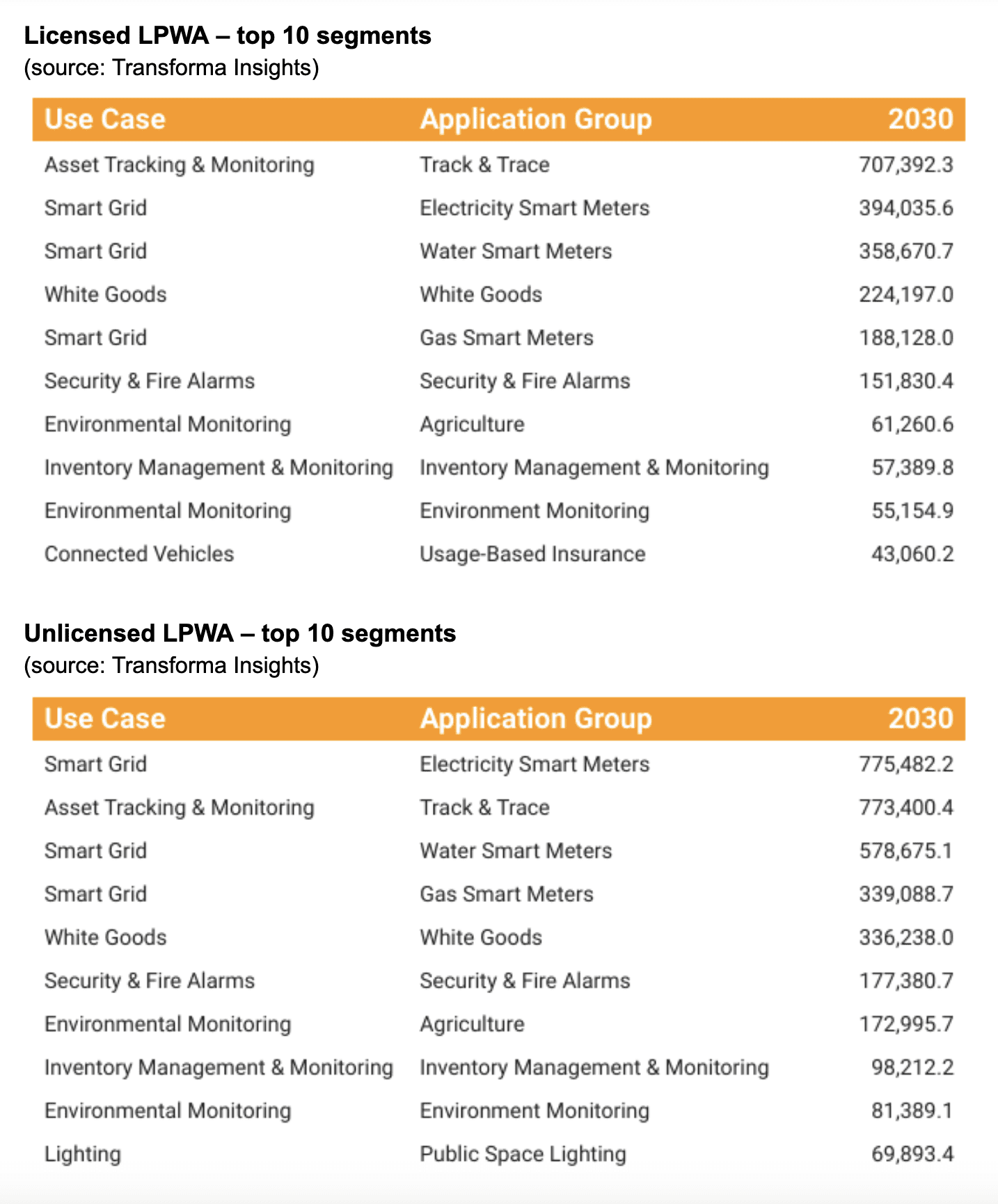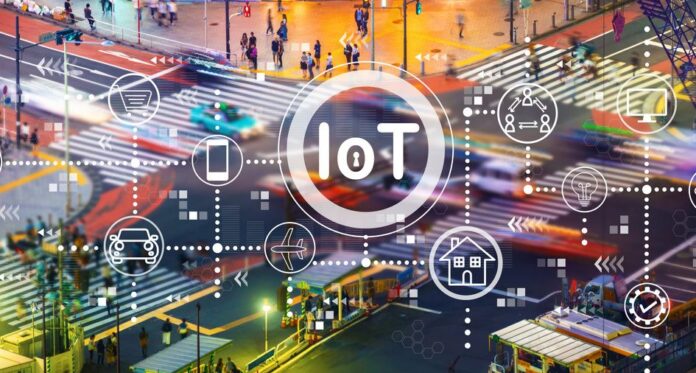The narrative about the environmental impact of disposable IoT (see here and here; check back for upcoming report on The Green Credentials of 5G and IoT), begs the question, of course; how many, exactly? How massive does ‘massive IoT’ get? And how big is the risk the planet will be littered with millions (billions?) of dirt-cheap tags and sensors?
We should, probably, ask an analyst; and amid the bombast and contradiction that characterizes IoT forecasting, Transforma Insights appears to have a forensic line on the matter. For context, the UK-based firm says there will be “over” four billion low-power wide-area (LPWA) IoT connections by 2030. Of these, 2.7 billion will be on LTE-M and NB IoT, the twin cellular-based LPWA network offerings; the rest will be with non-cellular alternatives, notably LoRaWAN and Sigfox.
Transforma Insights teases-out numbers from the cellular IoT count for certain key applications, as a talking point; the ratios for non-cellular LPWA tech are similar (see below). Among these, a decent chunk, almost 800 million units (about 30 percent of the 2.7 billion figure in 2030), will be for ‘asset tracking and monitoring’ of various kinds, to support track-and-trace (notably; about 700,000), plus things like bike and scooter sharing, container tracking, pest control, and agricultural solutions.

A bigger chunk (940,000; over a third) will go on metering; white goods, alarms, and environmental monitoring will also see massive-ish volumes. Of note, and of relevance, the firm lumps ‘disposable devices’ into its asset tracking category. These comprise the kinds of ultra (ultra!) cheap one-way IoT sensors (‘tracers’) being developed by the likes of Sigfox, which promise to open-up brand new IoT cases – and which also risk, if not conceived properly, a major environmental waste problem, as they are discarded after single-usage. Transforma Insights says their number will reach 11.3 million in 2030.
Interestingly, Jim Morrish, founding partner at the firm, suggests licence-exempt LPWA is less well-suited to disposable devices – “since to support tracking of a disposable device it’s helpful to have nationwide and multi-country coverage”. Sigfox says different, of course, and quotes “hundreds-of-millions” as the near-term prospect for its ‘ultra-ultra’ low-cost ‘tracer’ segment. The LoRaWAN brigade, meanwhile, is pursuing the same course, on its own terms (check back for interview with Semtech).
Morrish says this category is hardest to predict, just because novel R&D efforts may open the flood gates, and may also reveal that the river is dry. “There is clearly significant upside potential [with] disposable devices, as it is a niche that has potential to really ‘take off’ – although we’ve seen few signs of it actually happening. The tech space is littered with examples of things that might have taken off, but never did,” he says.
 At the same time, a trickle is starting to leak through the gates. “These things already exist,” he says, pointing to Vodafone’s work with German pharma firm Bayer to develop printable NB-IoT tracking labels for a couple of euros each to monitor products through the supply chain, and also to the example of Land Rover, which has sent interactive mail packs featuring Sigfox-connected replicas of vehicle ‘start’ buttons to get drivers to book a test-drive.
At the same time, a trickle is starting to leak through the gates. “These things already exist,” he says, pointing to Vodafone’s work with German pharma firm Bayer to develop printable NB-IoT tracking labels for a couple of euros each to monitor products through the supply chain, and also to the example of Land Rover, which has sent interactive mail packs featuring Sigfox-connected replicas of vehicle ‘start’ buttons to get drivers to book a test-drive.
In other words, the ultra low-cost IoT market remains nascent, but its potential to deliver massive IoT is clear, albeit unknowable. What does Morrish make of the environmental risk? Like others in these pages, he suggests the net impact should be positive in terms of business efficiencies and, therefore, their total environmental impact, even deploying disposable trackers.
He comments: “Clearly there is a negative sustainability impact with producing an individual device but, certainly in an enterprise context, new applications tend to be implemented with the aim of increasing efficiency, so the net impact tends to be positive.” Between the lines, as with others, the message is to optimize hardware usage, and to innovate in the meantime to develop alternative power supplies, and come up with better answers than batteries.

